Garmisch-Partenkirchen is a town on Germany’s southern border. I’d always wanted to visit, because it looks like a delightful place. It’s surrounded by mountains, including Germany’s tallest, Zugspitze. But, despite being in the region several times over the years, I never did—until April 2022.
Here’s what it was like visiting Garmisch-Partenkirchen for a day, and checking out one of its most popular sights: Partnachklamm.
About Garmish-Partenkirchen
Garmisch-Partenkirchen is many things, but a catchy name is not one of them. It is so called because the neighbouring villages of Garmisch and Partenkirchen amalgamated as they grew over the years. Most Germans just call it “Garmisch,” and the city’s official logo calls it “Ga-Pa.”
Garmisch was host to the 1936 Winter Olympics. Hard to believe, given how big the winter Olympics are now. But, in 1936 there were only 17 events. Norway won 15 medals, and Great Britain beat Canada at hockey. Also, Hitler was there, so a bit of a mixed bag overall.
In any case, Garmisch is a big-time skiing destination. But, like many ski towns, there’s plenty of other stuff to do, including in the skiing offseason.
One of those things is the Partnachklamm, known in English as Partnach Gorge.
Getting to the Partnachklamm
If you’re coming to Garmisch via train, prepare for about an hour of walking just to get to the Partnachklamm entrance. There are busses that run nearby, but the closest you can get by vehicle is still about 2 km from the ticket booth.
The path to the entrance starts at the Skistadion, which is an easy landmark to find—it’s an Olympic ski jumping platform. It dates back to the 1936 Olympics. There’s a large parking lot at the Skistadion if you happen to be driving (as we were).
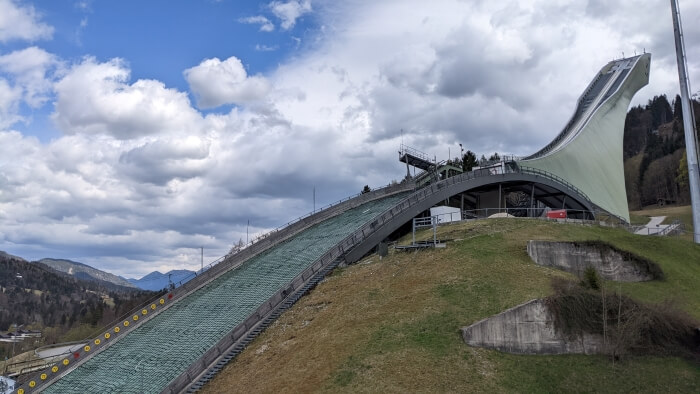
You can also climb up a bunch of stairs to the top of the hill beneath the ski jump’s highest platform. From there, there’s a great view over Garmish-Partenkirchen.
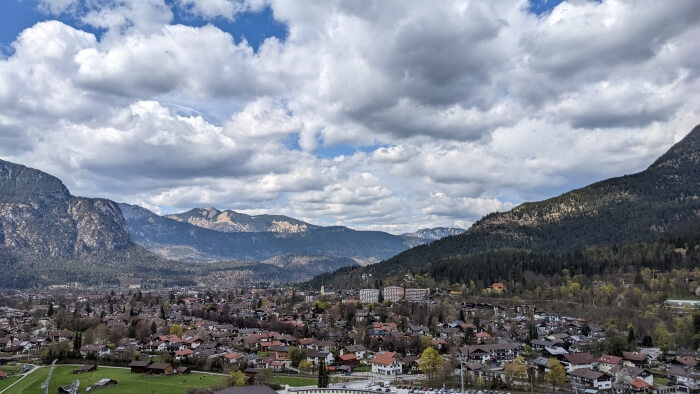
Visiting the Partnachklamm
“Partnach” means “Partnach.” “Klamm” means “Gorge.” This concludes our intensive three-week course.
But seriously, Partnachklamm is a stunning gorge. It’s carved deep into the Alpen stone, up to 86 metres deep and running nearly 700 metres long. It’s nothing short of amazing.
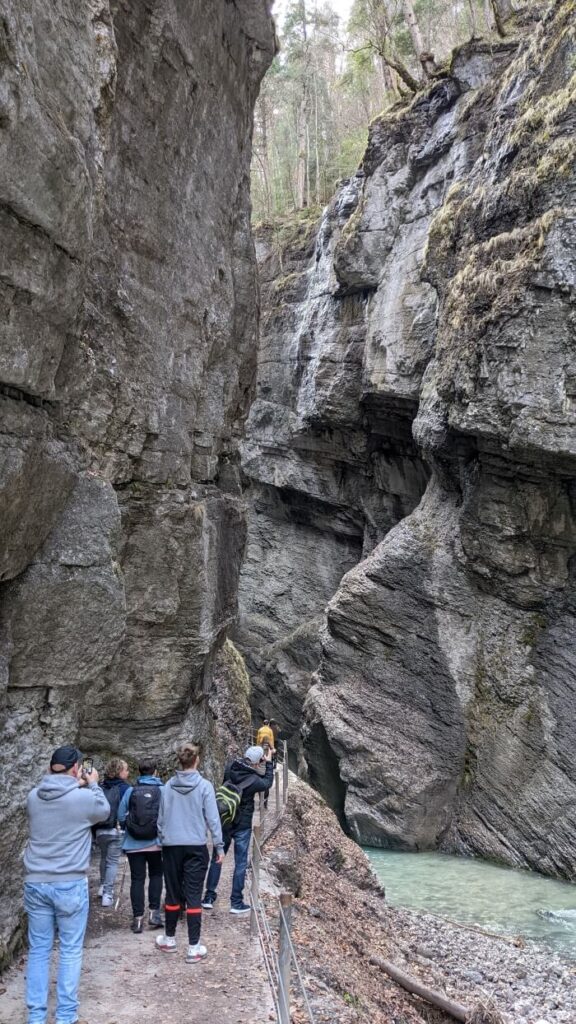
There is a walking path that hugs the sheer stone walls, running alongside the Partnach River that carved the gorge. In places, the path has no place to go but through the stone, so visitors get to walk through some caves as well.
One other thing about Partnachklamm is that it’s very popular—as many as 200,000 people visit annually. I imagine it gets rather crowded during peak times; in many places, the path is barely wide enough for two people to stand abreast.
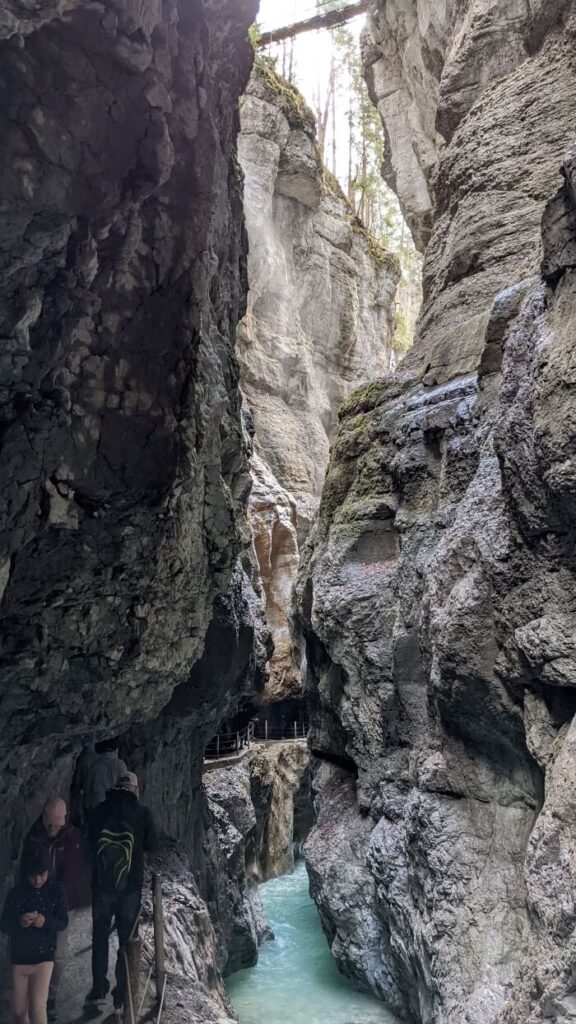
In April, however, it wasn’t bad. Busy, but not crowded.
There are several places where the path winds through actual caves, dark enough to make things hard to see. If you’re bothered by dark, closed-in spaces, that may be something to consider (but I thought it was awesome).
At the end of the gorge, the trail opens up to a wide, rocky area next to the river. It’s a great place to hang out and eat, which is exactly what we did. There’s nowhere to buy food, so make sure to bring some with you.
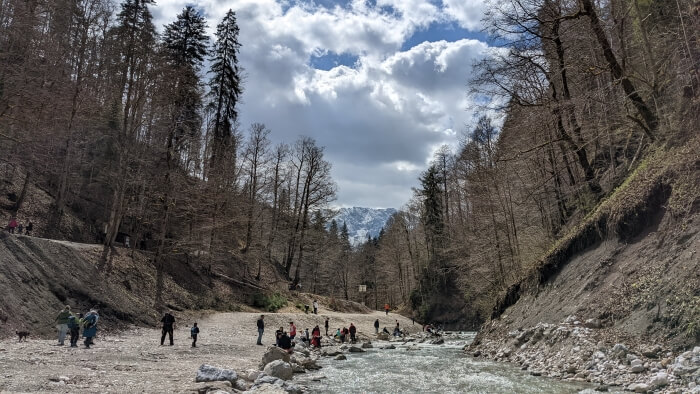
From this spot, one can continue on in many directions, including a long hike to the top of the Zugspitze. You can even hike over to Austria, if you’re so inclined.
There are also several mountain huts scattered across the surrounding hills, where one can buy food. Some are only open during the winter ski season, but others are open year-round (like the popular Kaiserschmarrn-Alm).
Most people just turn around and go back to the parking lot, though.
On that note, here’s a tip:
Don’t walk back through the gorge. It’s nice, but I can’t imagine fighting against the flow of traffic for those 700 metres. There are several alternate, above-ground routes to get back to the beginning. These routes offer the chance to see some new sights (and visit the aforementioned Kaiserschmarrn-Alm).
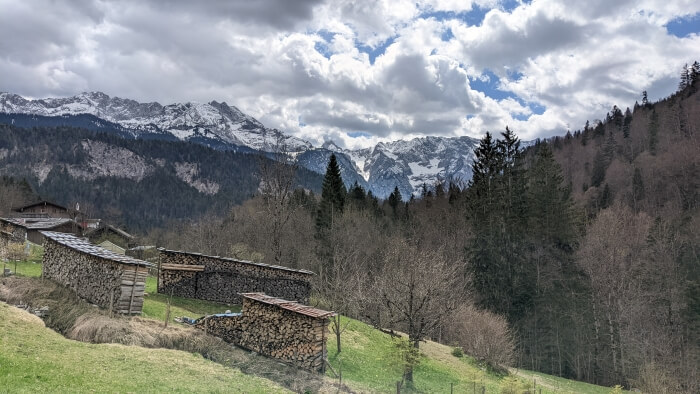
The Partnachklamm is open year-round, though is often closed during winter when conditions get icy. My suggestion, having been there precisely one time, is to go in April—it’s still busy, but quite manageable, and quieter than it would be during the summer holidays.
Questions or comments? Leave ’em below. Want to read another overnight backpacking story? Check out this story about hiking the Juan de Fuca trail.

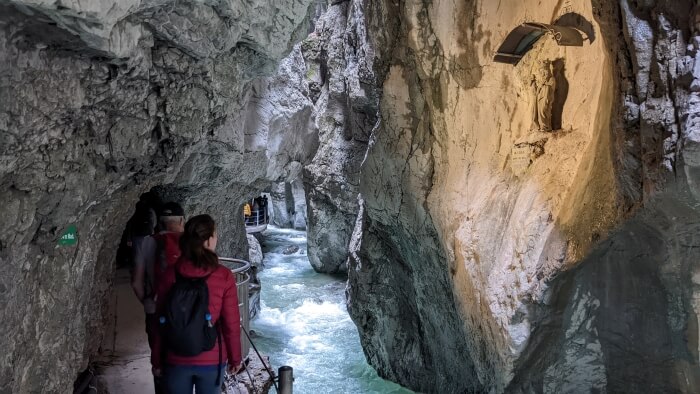
I am sure this piece of writing has touched all the internet visitors, its really really pleasant
piece of writing on building up new weblog.